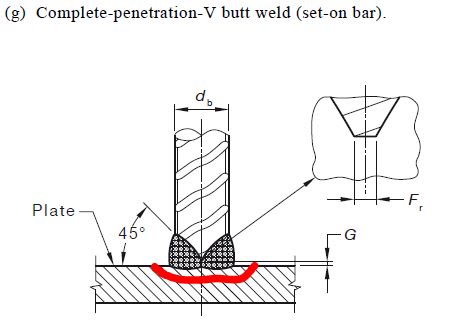bugbus
Structural
- Aug 14, 2018
- 533
Is this following butt weld detail able to develop the full strength of the rebar? (Assuming that the weld is not reinforced with a fillet weld).

I am assuming the bar material is roughly 2x the strength of the plate, and the weld tensile strength is enough to develop the full strength of the bar (e.g. Grade 500 MPa bar, Grade 250 MPa plate, 620 MPa weld strength).
Is the weakest plane not along the red line I've shown? I realise that the welding process causes the welded zone being locally stronger than the plate itself, but not sure if this is enough to prevent the plate breaking along the red line.

I am assuming the bar material is roughly 2x the strength of the plate, and the weld tensile strength is enough to develop the full strength of the bar (e.g. Grade 500 MPa bar, Grade 250 MPa plate, 620 MPa weld strength).
Is the weakest plane not along the red line I've shown? I realise that the welding process causes the welded zone being locally stronger than the plate itself, but not sure if this is enough to prevent the plate breaking along the red line.
